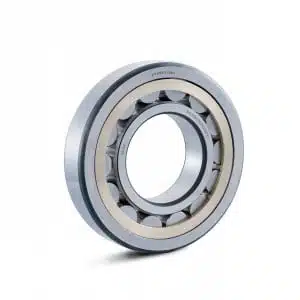
Cylinder Roller Bearing
If you’re looking for a cylinder roller bearing, you’ve come to the right place. Here, you’ll learn about some of the most critical issues associated with these bearings, including Radial load capacity and Minimum film thickness. We’ll also discuss choosing the right one for your specific needs. Listed below are the key aspects to consider when selecting a cylinder roller bearing:
Issues with cylinder roller bearings
When considering the performance of an axial cylindrical roller bearing, like double row cylindrical roller bearings, or a single row cylindrical roller bearings, its microstructure is an essential factor. A typical NU206 bearing consists of 13 rollers, four of which are under load at all times. However, the metallographic structure of the damaged region reveals that it may be suffering from some damage. This article will discuss some common problems leading to a cylinder roller bearing failure.
Skidding damage: Another potential issue with a cylinder roller bearing is the risk of secondary quenching, resulting in severe safety hazards. Because skidding damage occurs during the service life of certain types of aero engines, a cylindrical roller bearing is subject to this condition to assess the performance of a bearing. Skidding damage is evident on the bearing dynamic behavior curve. It is indicated by synchronous increases in vibration, temperature, and torque.
The friction torque of a cylinder roller bearing increases with speed. If the speed increases beyond a certain threshold, the friction torque decreases. Increasing speed also increases the amount of friction between the inner ring and rollers. Ultimately, this leads to a rise in the temperature of the bearing. If you need to increase the speed of a cylinder roller bearing, check if it can withstand the additional load.
To avoid causing excessive heat, consider a cylindrical roller bearing with a low tolerance. Its sensitivity to heat and drag can be reduced, reducing maintenance costs. Cylindrical roller bearings with a standard tolerance grade IT6 should have a corresponding housing and shaft seat. For more information, see the table below. The table also lists guide values for positional and geometrical tolerances. Lastly, note that these cylinder roller bearings meet the ISO standards.
Generally, high-speed roller bearings are manufactured to meet the demands of high-performance rotating machinery. They should have lower vibration and noise and longer service lives. However, extreme sliding can result in smearing and wear on contact surfaces. Several researchers have studied skidding failure and the role of film thickness. These findings show that the cage slip can cause excessive vibration. Regardless of the size of a cylindrical roller bearing, this problem should be addressed before it affects the performance of the cylinder.
Contact pressure
The contact pressure of a cylinder roller bearing is the force exerted on a cylinder. There are two parts of a cylinder: the male and female parts. When the radii of curvature are close together, the male part is considered convex and the female part concave. The radii of curvature of each of these parts are also very tight, and there is no friction. The bearing pressure is limited to the radial force when the cylinder-cylinder contacts.
This stress is proportional to the area of the contact region. The contact pressure of a cylinder roller bearing is calculated with the help of the formula given in Table 11-1. The first column gives the shape of the surfaces of two cylinders, and the second provides the surface area. The third column shows the maximum bending stress that the contact region experiences. In addition, the centerline of the contact region experiences the maximum bending stress, and the edge of the cylinder is under the maximum tensile and compressive bearing stress. The maximum shear bearing stress characterizes the interior of the compressed parts.
A numerical analysis determines the contact stress of a roller. In this study, the maximum contact pressure and axis orbit are compared. A calculating model is developed to analyze the contact stress between the rollers and raceways of a cylinder roller bearing. The numerical example illustrates the influences of the geometrical error on the distribution of tensions under the surface of the cylinder roller bearing.
Minimum film thickness
The Minimum Film Thickness for Cylindrical Roller Bearings is a fundamental concept for determining the minimum lubricant film thickness. This measurement is precious and can provide vital information for determining the film thickness of a bearing. This study used the same running conditions to determine grease film thickness and applied them to the cylinder roller bearing.
As we know, grease leakage is caused by three mechanisms. Shear softening, high temperature, and the pushing-out force generated by the rolling motion result in grease leakage. A film thickness decreases with aging, which leads to reduced grease supply to the contact points and starvation. This study observed a decrease in the film thickness in a cylinder roller bearing. This resulted in localized heat development.
The generation of the grease film has a strong effect on the bearing’s performance. If the film is insufficient, it will direct contact between the bearing surfaces, leading to premature wear and reduced bearing life. Grease lubrication is a more complicated process that can be affected by starvation, replenishment, mechanical aging, and the changing properties of the grease. The bleeding property of grease lubricants will be impacted by starvation and replenishment processes, so the Minimum Film Thickness for Cylindrical Roller Bearings is essential to their performance.
This study also examines the lubrication performance of a rib/roller end contact. A thermocouple attached to the outer ring of the bearing case records the self-induced temperature. Air pressure from an air spring was applied to the bearing to measure the applied load. The bearing was filled with 30% of its free volume and closed with shields. The bearing was weighted to assess possible leakage.
We first calculate the base oil viscosity under fully flooded conditions. Then, we use the Walther equation to calculate the base oil viscosity. After obtaining these two quantities, we can get the Minimum Film Thickness for Cylinder Roller Bearings. The result is a more precise prediction of the performance of cylinder roller bearings.
Radial load capacity
The axial and radial load capacity is calculated using standard equations. However, some applications involve high thrust loads, which must accommodate lubricated bearing. A standard equation must be modified to calculate the maximum safe thrust load for a cylinder roller bearing, and oil viscosity must be introduced. Cylindrical roller bearings have an outstanding radial load capacity.
A double-row cylinder roller bearing can handle high radial loads and is available with a cylindrical or tapered bore. Some are equipped with lubrication grooves or holes on the outer ring, making them suitable for high-speed applications. The machined bronze retainer is an essential feature of this bearing, as it maintains the distance between the rolling elements. They reduce noise and vibration. Some double-row cylinder roller bearings also have separable outer or inner rings for ease of mounting and dismounting.
Single-row radial bearings are available in single-row and double-row configurations. Single-row radial bearings are designed to handle axial loads only, while double-row versions can handle thrust loads in both directions. The shaft alignment plays a critical role in the overall bearing life. Self-aligning and full-complement bearings are available with as many balls as they can fit. However, their wear rate is much higher than that of a carrier.
The axial load capacity of a cylinder roller bearing can be calculated by determining the effective length of the roller. Because of the radii at the ends of the roller, the effective length is often smaller than the actual length of the roller. Axial load capacity can also be calculated using empirical data. They are widely used in various industries. They are widely used in machinery, electric motors, railways, wind turbines, and motorcycles. The durability of cylindrical roller bearings makes them one of the most popular types in use.
Cylindrical roller bearings are widely available in thermal, hydraulic, and mechanical mounting. If one is removed, it forms a ready-to-mount unit. Another way to mount the bearing is by removing the bearing ring and installing a second one. The L-section ring is made of rolling bearing steel and is hardened and ground to reduce axial runout. However, it is essential to note that the L-section ring must be purchased separately to mount a cylindrical roller bearing.
EVERGLORY is a leading cylinder bearing manufacturer based in China; if you are interested in the cylindrical roller bearing number or cylindrical roller bearing catalogue (we can also produce cylindrical roller thrust bearing), please do not hesitate to contact EVERGLORY.


